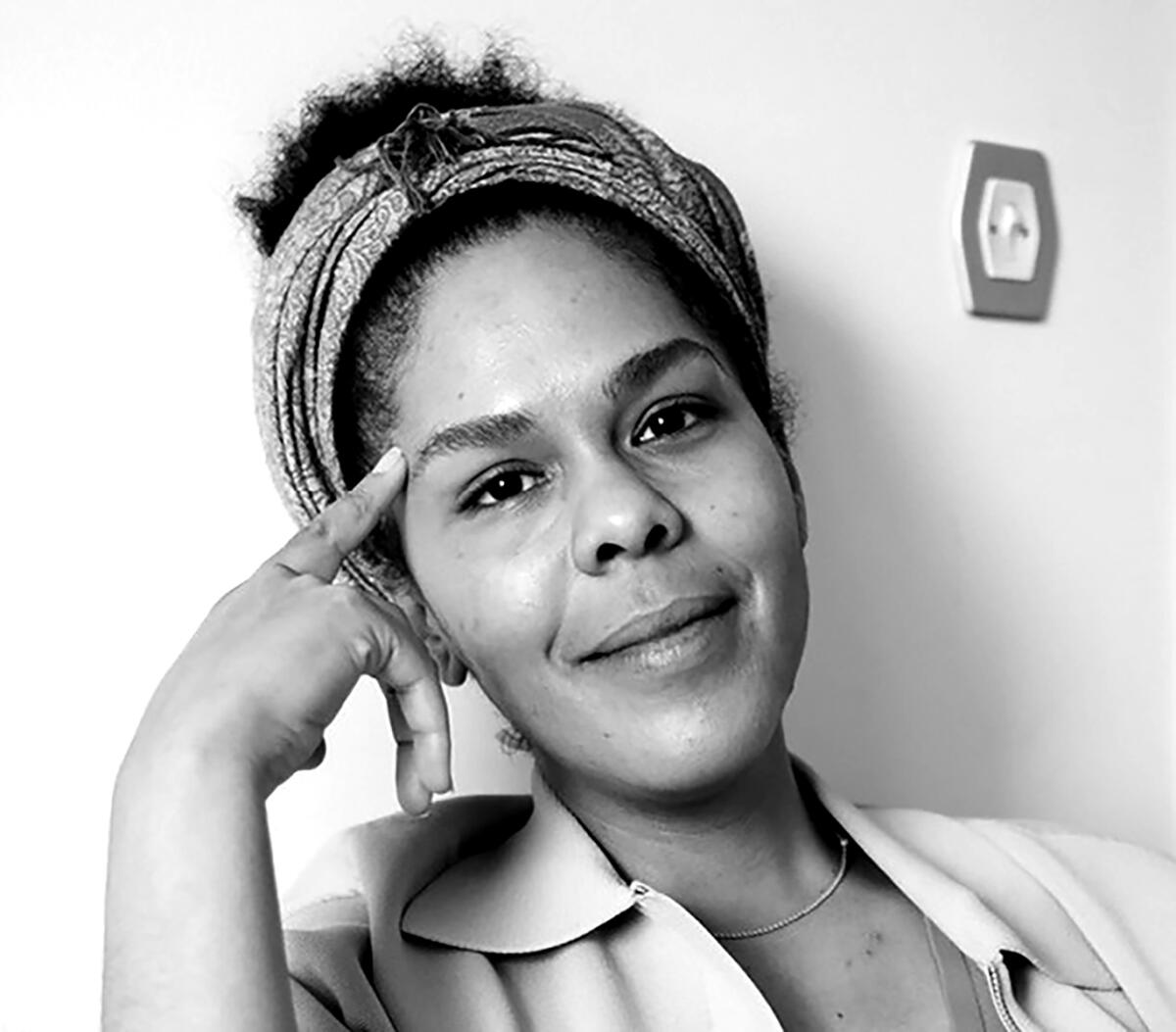Author of LAFD Palisades fire report declined to endorse final version, called it ‘highly unprofessional’
The author of the Los Angeles Fire Department’s after-action report on the Palisades fire declined to endorse it because of substantial deletions that altered his findings, calling the edited version “highly unprofessional and inconsistent with our established standards.”
Battalion Chief Kenneth Cook emailed then-interim Fire Chief Ronnie Villanueva and other LAFD officials with the subject line “Palisades AARR Non-Endorsement,” about an hour after the highly anticipated report was made public Oct. 8.
“Having reviewed the revised version submitted by your office, I must respectfully decline to endorse it in its current form,” Cook wrote in the email obtained by The Times. “The document has undergone substantial modifications and contains significant deletions of information that, in some instances, alter the conclusions originally presented.”

Battalion Chief Kenneth Cook complained to former interim Fire Chief Ronnie Villanueva about deletions and revisions in the Palisades fire after-action report.
(L.A. City Mayor’s Office)
He continued, “While I fully understand the need to address potential liability concerns and to modify certain sections in consultation with the City Attorney to mitigate litigation risks, the current version appears highly unprofessional and inconsistent with our established standards. I strongly urge you to reconsider publishing the report as it stands.”
In the email, Cook also raised concerns that the LAFD’s final report would be at odds with a report on the January wildfires commissioned by Gov. Gavin Newsom’s office, which has yet to be released.
“I am concerned that substantial disparities may exist between the two reports,” Cook wrote.
Izzy Gardon, a spokesperson for Newsom, said in a statement Tuesday, “The Governor commissioned an independent review by the world’s leading fire safety experts to ensure the public receives a complete, accurate, and unvarnished accounting of the events leading up to the Palisades fire and how responding agencies carried out their response.”
Cook — who emails show provided a final draft of the after-action report to Villanueva in August — has declined to comment. Attempts to reach Villanueva were unsuccessful.
The LAFD has refused to answer questions from The Times about the deletions and revisions. Mayor Karen Bass’ office said the LAFD wrote and edited the report, and that the mayor did not demand changes.
On Sunday, The Times reported that Cook was upset about the changes to the report. The previous day, The Times had disclosed the watering down of the after-action report after analyzing seven drafts obtained through a public records request. The most significant changes involved the LAFD’s failure to order firefighters to stay on duty for an additional shift and to fully pre-deploy engines in high-risk areas before the Jan. 7 fire, as the wind warnings became increasingly dire. It’s unclear who exactly directed the revisions.
Cook’s Oct. 8 email laying out his concerns in stark language adds to the growing evidence that city and LAFD officials attempted to burnish the LAFD’s image in a report that should have been an honest assessment of the department’s failings in preparing for and fighting the fire, which killed 12 people and destroyed thousands of homes. The goal of such a report is to prevent similar mistakes.
Cook’s email reached Bass’ office in mid-November, according to Bass spokesperson Clara Karger.
Karger said last week that “the Mayor has inquired with Chief Moore about the concerns,” referring to Jaime Moore, who became LAFD chief last month.
The Times submitted a public records request last month for all of the mayor’s emails about the after-action report, a request that the city has not yet fulfilled. Bass’ office provided Cook’s email to The Times on Tuesday.
The city had withheld Cook’s email from its response to a separate records request filed by an unknown party in October. Almost 180 of Cook’s emails were posted on the city’s records portal on Dec. 9, but the one that expressed his concerns about the report was missing. That email was only posted on the portal Tuesday, after The Times asked about it.
The LAFD did not respond to a Times query about why the email was not released with Cook’s other emails. Bass’s office also did not respond to a query about Cook’s concerns and the fact that they were withheld from the public.
Gene Cameron, who lived in the Palisades for 50 years before his home burned down in the Jan. 7 fire, was disturbed by the LAFD’s revisions, which he said amounted to a cover up.
“I appreciate his bravery to stand up against these unprofessional immoral edits,” he said of Cook, adding that the point of the report is not to assign blame, but to prevent future mistakes. “It’s just to establish a set of rules, procedures and guidelines so that this doesn’t happen again.”
City Councilmember Traci Park, whose district includes the Palisades, said in a statement Tuesday that the city can’t fix systemic failures or rebuild public trust without full transparency.
“I’ve said from the beginning that LAFD should not be investigating itself. After a disaster of this magnitude, the public deserves a full, unfiltered accounting of what went wrong and why — and my independent after-action report will provide exactly that,” she said, referring to a report she requested that the City Council approved and funded earlier this year, though it hasn’t been completed.
Genethia Hudley Hayes, president of the Board of Fire Commissioners, did not immediately respond Tuesday to a request for comment. She previously told The Times that she heard rumors that the author of the report was unhappy, but that she did not look into the matter.
A July email thread reviewed by The Times shows concern over how the after-action report would be received, with the LAFD forming a “crisis management workgroup.”
“The primary goal of this workgroup is to collaboratively manage communications for any critical public relations issue that may arise. The immediate and most pressing crisis is the Palisades After Action Report,” LAFD Asst. Chief Kairi Brown wrote in an email to eight other people.
“With significant interest from media, politicians, and the community, it is crucial that we present a unified response to anticipated questions and concerns,” Brown wrote. “By doing so, we can ensure our messaging is clear and consistent, allowing us to create our own narrative rather than reactive responses.”
Cook was not included on that email thread. It’s unclear how much of a role, if any, that group had on the revisions.
The after-action report has been widely criticized for failing to examine a New Year’s Day fire that later reignited into the Palisades fire. Bass has ordered the LAFD to commission an independent investigation into its missteps in putting out the earlier fire.
One edit to the after-action report involved language stating that the decision to not fully staff up and pre-deploy all available crews and engines ahead of the extreme wind forecast “did not align” with the department’s policy and procedures during red flag days.
The final report did not include that language, saying instead that the number of engine companies rolled out ahead of the fire “went above and beyond the standard LAFD pre-deployment matrix.”
A section on “failures” was renamed “primary challenges,” and an item saying that crews and leaders had violated national guidelines on how to avoid firefighter deaths and injuries was scratched.
Another passage that was deleted said that some crews waited more than an hour for an assignment the day of the fire.
Two drafts contain notes typed in the margins with suggestions that seemed intended to soften the report’s effect and make the Fire Department look good. One note proposed replacing the image on the cover page — which showed palm trees on fire against an orange sky — with a “positive” one, such as “firefighters on the frontline.” The final report’s cover displays the LAFD seal.
The final version listed only 42 items in the section on recommendations and lessons learned, while the first version reviewed by The Times listed 74.





